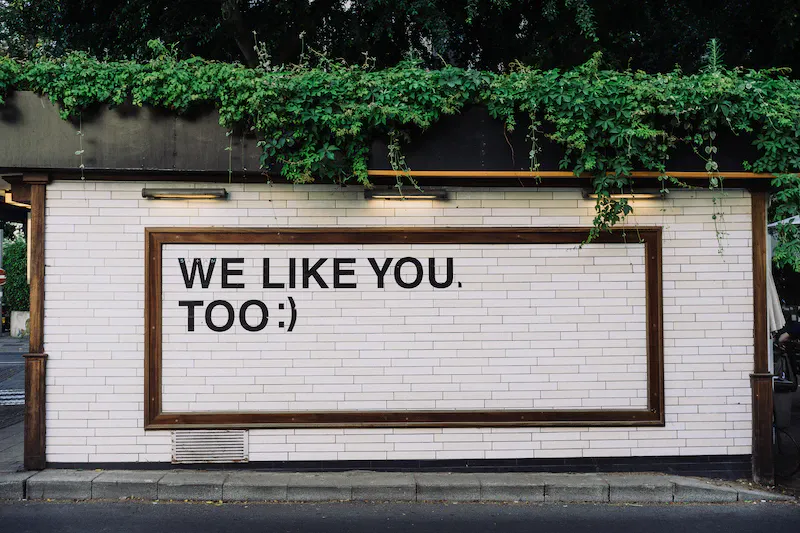The Truth About Muslim Womens Clothing: Beyond the Misconceptions

The Solution to Women Being Attacked and Molested in Medina
Around the year 600 AD, in the city of Medina, women who needed to relieve themselves in the middle of the night would have to walk out past the outskirts of the city and into the wild for privacy. However, a group of men began to see an opportunity in women’s nightly treks and started to linger at the outskirts of the city, their identities hidden in the dark, watching. If a woman walked by and she happened to be wearing a jilbab, a coat-like garment, the men knew to leave her alone because a jilbab was a status symbol that announced that the woman was free and protected by her clan. She would have no problem speaking out against the attacker and identifying him. But if the woman walking out at night wasn’t wearing a jilbab, if she happened to be dressed a bit more freely, then the men knew she was a slave and they attacked her.
Concerned members of the community brought the situation to the Prophet Muhammad, who turned this particular matter over to God. A verse was revealed for the Quran, the Muslim holy book, advising that all women dress similarly so that they can’t be picked out from one another, zeroed in on, and attacked. The verse suggested that a woman’s way of dress should be based on her function in society, her role, and the society’s specific customs. Muslim scholars ruled that a woman’s way of dress should be based on two considerations: a woman’s function in society, and the society’s specific customs.
The role of clothing and the importance of the garment known as the jilbab
Clothing played an essential role in the story of how Prophet Muhammad found a solution to women being attacked and molested in Medina. The Prophet understood that modest dress could help women avoid unwanted attention and harassment. One garment that gained significance in this context was the jilbab.
The jilbab is a long and loose garment that covers the entire body and is worn over other clothing. It is an outer garment that helps Muslim women to dress modestly and maintain their dignity. In the early days of Islam, the jilbab was a simple piece of cloth that was wrapped around the body. However, over time, it evolved into a more structured garment that could be worn in different styles.
The jilbab has many benefits. It not only protects women’s modesty but also provides them with a sense of privacy and security. By wearing a jilbab, Muslim women can move about freely in public spaces without fear of harassment or unwanted attention. It also serves as a symbol of identity and faith for Muslim women who choose to wear it.
In conclusion, the jilbab is an essential garment that plays a crucial role in protecting the modesty and dignity of Muslim women. It is not just a piece of clothing but a symbol of faith and identity for Muslim women around the world.
The verse in the Quran advising women to dress similarly for protection
One of the most famous verses in the Quran that addresses the issue of modesty and dress is Surah Al-Ahzab, verse 59. The verse advises women to cover themselves in a specific way in order to be recognized as believers and to be protected from harassment or harm.
The verse reads: “O Prophet, tell your wives and your daughters and the women of the believers to bring down over themselves [part] of their outer garments. That is more suitable that they will be known and not be abused. And ever is Allah Forgiving and Merciful.”
The “outer garments” mentioned in the verse is believed to refer to the jilbab, a long, loose-fitting garment that covers the entire body except for the face and hands. The purpose of the jilbab is to conceal the shape of a woman’s body, thereby reducing the chances of unwanted attention or harassment.
The verse also emphasizes the importance of women being recognized as believers by their clothing. By dressing modestly, Muslim women are making a statement about their faith and their identity as part of the ummah, or the Muslim community. This recognition can also provide an additional layer of protection against potential attackers, who may be more hesitant to target a member of a recognized religious group.
Overall, the verse in Surah Al-Ahzab provides guidance for Muslim women on how to dress in a way that is both modest and protective. While some may view this as a form of oppression or restriction, for many Muslim women, dressing modestly is seen as a way of expressing their faith and protecting themselves from harassment and harm.
The ruling that a woman’s dress should be based on her function and society’s customs
In Islam, it is believed that a woman’s dress should be based on her function and society’s customs. This means that the way a woman dresses can vary depending on her role and the culture she lives in. For example, the way a woman dresses for work may differ from the way she dresses at home or in a religious setting.
Islam encourages modesty and decency in dress, but does not prescribe a specific dress code. Instead, it advises women to dress in a way that is appropriate for their function and the society they live in. The Quran states that women should “lower their gaze and guard their modesty” (24:30), but it does not provide a detailed description of what modesty entails.
The Islamic dress code varies across different cultures and regions. In some countries, women may wear a hijab or niqab, while in others, they may wear a headscarf or no head covering at all. The important thing is that women should dress in a way that is in line with the customs and values of their society.
In conclusion, the way a woman dresses in Islam is not a one-size-fits-all approach. It is based on her function and the society she lives in. Modesty and decency are encouraged, but the specifics of what that means can vary depending on the context.
The modern application of this ruling for Muslim women in America
In modern times, Muslim women living in America face a unique set of challenges when it comes to dress and societal norms. Many Muslim women choose to wear the hijab or other forms of modest dress as an expression of their faith and cultural identity. However, some may face discrimination or even violence because of their clothing choices.
It’s important to note that the ruling on a woman’s dress being based on her function and society’s customs still applies today. In America, this means that Muslim women may choose to dress in a way that is modest and conforms to Islamic principles, while also fitting into the larger cultural context.
For example, a Muslim woman who is a doctor may choose to wear a lab coat over her hijab when seeing patients, as it is more practical and appropriate for her profession. Likewise, a Muslim woman living in a more conservative community may choose to dress in a way that is more covered than a Muslim woman living in a more liberal community.
It’s also worth noting that the Quranic verse advising women to dress similarly for protection should not be taken out of context or used to justify oppressive or controlling behavior. Muslim women should be able to choose how they dress based on their own personal preferences and beliefs, without fear of judgment or discrimination.
In conclusion, the ruling on a woman’s dress in Islam is based on the principles of modesty, functionality, and conformity to societal customs. Muslim women living in America have the freedom to choose how they dress based on these principles, while also navigating the unique challenges of their cultural context.
The Misconception that Hijab is a Requirement for Muslim Women
There is a common misconception that the hijab is a requirement for all Muslim women. However, this is not entirely true. While modesty in dress is encouraged in Islam, the practice of covering one’s head and body is not mandatory. In fact, it is a personal choice that is left up to the individual.
Many Muslim women choose to wear the hijab as a symbol of their faith, while others do not. The decision to wear it is based on personal beliefs and cultural customs. Therefore, it is important to avoid stereotypes and understand that there is no single way to practice Islam.
Furthermore, the hijab is not just about clothing, but also about behavior and attitude. It is a way of conducting oneself with dignity and respect for oneself and others. It is a means of showing humility and submission to God, as well as a way of expressing one’s identity as a Muslim.
In the modern world, the hijab has become a symbol of controversy and is often misunderstood. Some people see it as a sign of oppression or a barrier to integration, while others view it as a symbol of freedom and giving power. However, it is important to remember that wearing the hijab is a personal choice and should not be forced upon anyone.
In conclusion, the hijab is a personal choice that is based on individual beliefs and cultural customs. It is not mandatory in Islam, and Muslim women should not be judged based on whether or not they choose to wear it. Rather, we should focus on understanding and respecting each other’s choices and beliefs.
The insertion of certain meanings in the Quran by some clerics, leading to oppressive rulings
Unfortunately, some clerics have inserted certain meanings into the Quran that can lead to oppressive rulings towards women, including the misconception that hijab is mandatory. The Quran does not explicitly require women to cover their heads or wear a specific garment. However, some clerics have misinterpreted certain verses and inserted their own meanings, leading to oppressive rulings.
For example, some clerics have interpreted the concept of “awrah” to mean that a woman’s entire body must be covered except for her face and hands. This interpretation is not supported by the Quran and is not historically accurate. In fact, “awrah” refers to a person’s private parts, not their entire body.
Additionally, some clerics have inserted the idea that women should not be seen or heard in public spaces. This is not supported by the Quran and is a misinterpretation of the teachings. The Quran promotes modesty and respect for oneself and others, but it does not limit women’s participation in public life.
It’s important to recognize these oppressive interpretations and reject them in favor of a more accurate understanding of the Quran. Muslim women should be enabled to make their own choices regarding their clothing and their participation in society, based on their individual beliefs and the customs of their community.
The question of whether these clerics are truly purifying Islam or acting like predators on women
The issue of oppressive rulings being made by certain clerics is a complex one, and raises questions about the role of religious authority in interpreting and enforcing religious teachings. Some argue that these clerics are acting as predators on women, using their positions of power to impose their own interpretations of Islam on others, while others argue that they are simply attempting to purify the religion and ensure that it is being practiced correctly.
In the context of the hijab, it is important to note that the Quran does not explicitly require women to wear it, but rather encourages modest dress for both men and women. It is the interpretation of certain clerics that has led to the idea that the hijab is mandatory, and the imposition of harsh punishments for those who do not comply.
It is worth considering whether this interpretation is truly in line with the teachings of Islam, or whether it is a reflection of cultural norms and societal pressures that have been imposed on the religion. Ultimately, the question of how to interpret and apply religious teachings is a complex and ongoing one, and requires a nuanced understanding of the various factors at play.
Conclusion
The issue of women’s dress in Islam is complex and multifaceted, and it is clear that there are many different opinions and interpretations on the topic. While the Quran does provide guidance on the issue, the meaning and application of these verses can vary widely depending on the cultural context and societal norms of the time and place.
One thing that is clear is that the dress code for Muslim women is not a monolithic concept, but rather a reflection of the diversity of Muslim cultures and communities around the world. The hijab, for example, is often seen as a symbol of oppression by those outside of the faith, but for many Muslim women, it is a powerful expression of identity and faith.
It is important to recognize that the dress code for Muslim women is not simply a matter of personal choice, but is also shaped by social and cultural pressures. The Quran may provide guidance on the issue, but it is up to individual women to determine how to interpret and apply these verses in their own lives.
Unfortunately, there are also instances where certain interpretations of Islamic dress codes have been used to oppress women and restrict their freedoms. It is important to remain vigilant against such abuses and to work towards a more inclusive and tolerant understanding of Islam.
Overall, it is clear that the issue of women’s dress in Islam is complex and multifaceted, and it is up to each individual woman to determine how to interpret and apply the guidance provided by the Quran. It is also important for society as a whole to be mindful of the cultural and social pressures that may influence a woman’s decision on how to dress, and to work towards a more inclusive and respectful understanding of Islam that recognizes the diversity of Muslim communities around the world.


